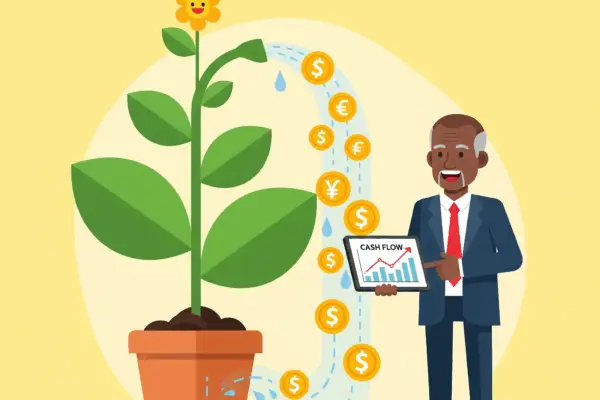As a business leader, you know that acquiring new clients is the lifeblood of your service business. While inbound marketing can bring leads to you and cold calling offers a way to reach out proactively, there’s a powerful strategy that sits in the sweet spot between the two: warm calling. Unlike calling a complete stranger, a warm call is made to a prospect with whom you have some pre-existing connection or trigger – perhaps they downloaded a piece of your content, attended a webinar, were referred by a mutual contact, or engaged with your business in some other way.
For service businesses, where relationships and trust are key to conversion, warm calling is particularly effective. It leverages an existing level of awareness or connection, making the initial conversation less intrusive and significantly increasing the likelihood of a positive interaction and a successful outcome. Mastering the art of warm calling is a crucial skill for any leader or sales team focused on improving lead conversion rates and driving business growth.
Let’s explore why warm calling is a valuable strategy for service businesses and how to effectively turn those connections into meaningful conversations that lead to sales.
Warm Calling vs. Cold Calling: The Advantage of a Connection
The fundamental difference lies in the prospect’s awareness.
* Cold Calling: Reaching out to someone with no prior contact or expressed interest in your business. It’s essentially an unsolicited introduction.
* Warm Calling: Reaching out to someone who has had some form of interaction with your business or shares a mutual connection. This interaction provides context and a reason for your call, making the prospect more receptive.
This existing connection gives you a significant advantage, leading to higher engagement rates, more productive conversations, and ultimately, better lead conversion.
Identifying and Qualifying Warm Leads for Your Service Business
Where do you find these valuable warm leads?
* Website Activity: Prospects who have downloaded lead magnets (eBooks, guides), requested information, used a chat feature, or visited key service pages.
* Content Engagement: Individuals who have subscribed to your blog or newsletter, commented on your articles, or engaged with your content on social media.
* Event Attendees: People who have attended your webinars, workshops, or in-person networking events.
* Referrals: Prospects introduced by existing clients or networking contacts (a particularly valuable type of warm lead).
* Past Clients: Opportunities for repeat business or upselling additional services.
* Social Media Interaction: Users who have engaged with your business profile, sent a direct message, or commented on your posts.
Once identified, qualify these leads to ensure they fit your ideal client profile before making the call.
Preparing for a Successful Warm Call
Don’t just pick up the phone. Preparation is key to leveraging that existing connection:
* Research the Lead: Understand the nature of their interaction with your business. What content did they consume? What event did they attend? Who referred them? Also, do basic research on their role and business to understand their likely needs or challenges.
* Define Your Objective: What is the specific goal of this call? Is it to schedule a discovery meeting, gather more information about their needs, or introduce a specific service?
* Craft Your Opening: Plan how you will reference the existing connection immediately. This breaks the ice and provides context for your call.
* Prepare Talking Points, Not a Script: Have a clear idea of the key messages you want to convey and the questions you want to ask, but be ready to adapt based on the conversation.
Executing the Warm Call: Turning Connection into Conversation
Making the call requires a strategic approach:
* Reference the Connection Early: Start by reminding them of the prior interaction (e.g., “Hi [Name], I saw you downloaded our guide on [Topic],” or “Hi [Name], [Mutual Connection] suggested I reach out”). This immediately establishes rapport.
* Be Friendly and Authentic: Leverage the established warmth. Be human, conversational, and genuine. Avoid sounding overly salesy or robotic.
* Active Listening is Crucial: Ask open-ended questions to understand their needs and challenges. Listen carefully to their responses and use that information to guide the conversation and tailor your value proposition.
* Focus on Value, Not Just Selling: Connect your services to their likely pain points, referencing the context of your connection. Explain how you can help them solve a problem or achieve a goal.
* Be Respectful of Their Time: Get to the point efficiently while still being personable. Be mindful of their schedule and offer to follow up later if it’s not a good time.
* Define Clear Next Steps: Before ending the call, agree on what will happen next. This could be scheduling a follow-up meeting, sending additional information, or connecting on LinkedIn.
Training Your Team and Measuring Success
Equip your sales team with the skills and strategies for effective warm calling. Provide training, practice scenarios, and resources. Implement tracking within your CRM system to monitor the effectiveness of your warm calling efforts, including conversion rates from different types of warm leads.
The Strategic Advantage of Warm Calling
Mastering warm calling is a vital skill for any service business leader and their sales team. It leverages existing connections to create more receptive prospects, leading to higher conversion rates, shorter sales cycles, and a more efficient lead generation process. By strategically identifying and nurturing warm leads, preparing thoughtfully for each call, and executing with authenticity and a focus on value, you can turn those initial connections into valuable client relationships and significantly contribute to your business growth.
What strategies have you found most effective for converting warm leads into clients? Share your insights and tips in the comments below!




